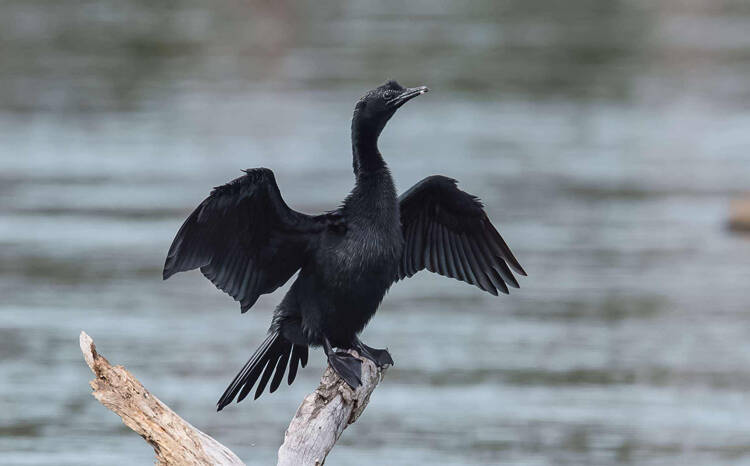Little Cormorant
IUCN
LCBasic Information
Scientific classification
- name:Little Cormorant
- Scientific Name:Phalacrocorax niger
- Outline:Waterfowl
- Family:Suliformes Phalacrocoracidae Microcarbo
Vital signs
- length:50-51cm
- Weight:300-500g
- lifetime:10-20year
Feature
Gentle and not afraid of people
Distribution and Habitat
Bangladesh, Bhutan, China, Cambodia, India, Indonesia, Lao People's Democratic Republic, Malaysia, Myanmar, Nepal, Pakistan, Sri Lanka, Thailand, Vietnam.
Migrant bird: Afghanistan
Distribution in China is only found in Yunnan Province.
Inhabits inland lakes, rivers, reservoirs, ponds and swamps, and even enters small ponds near villages during the non-breeding season.
Appearance
The body is slender, the beak is short and thick, the head is relatively round, the neck is relatively short, and the round tail is relatively long. In the breeding season, the whole body is black, with dark blue and blue-green luster; the shoulders, inner secondary flight feathers and wing coverts are dark silver-gray, with black feather edges; the top of the head, the sides of the head and the neck are decorated with a few white filamentous feathers; there is a slight short crest on the occipital and the nape of the neck. In the non-breeding season, the white filamentous feathers on the head and neck disappear, and the chin and throat are white.
The iris is green, the corners of the mouth are brown, the tip is black, and the base is lead purple. In the non-breeding season, the throat sac and the skin around the eyes are black, purple in the breeding season, the feet and tarsus are black, and decorated with flesh purple in the breeding season.
The young bird is brown all over, w
Details
Little Cormorant, a medium-sized cormorant, is much smaller than the general cormorant and has no subspecies.

Little Cormorant is relatively docile and not afraid of people. It mainly feeds on fish. The main way of foraging is by diving, hunting for food underwater.
Black-necked cormorants breed in various lakes, ponds and swamps that are suitable for nesting and rich in food, and also nest in smaller ponds. The breeding season varies significantly from region to region, and almost all breed from March to December. In India, the breeding season is from July to September, and in Sri Lanka from March to April and November to December. They often nest together in small groups of 5 to 6 pairs, and occasionally large groups of up to 50 to 60 pairs can be seen nesting together in trees by the water or in relatively tall grass. Each nest lays 3 to 5 eggs, which are pointed oval in shape, with an average size of 44.8 mm × 29.0 mm, the largest of which is 48.1 mm × 28.4 mm and 45.1 mm × 31.0 mm, and the smallest of which is 41.1 mm × 28.7 mm and 41.8 mm × 26.3 mm (Baker 1929).
China Red List of Endangered Animals: Vulnerable Effective Year: 1996
Listed in the IUCN Red List of Threatened Species in 2016, ver 3.1 - Least Concern (LC).
Listed in China's "National Key Protected Wildlife List" (February 5, 2021) Level 2.
Protect wildlife and eliminate game.
Maintaining ecological balance is everyone's responsibility!








